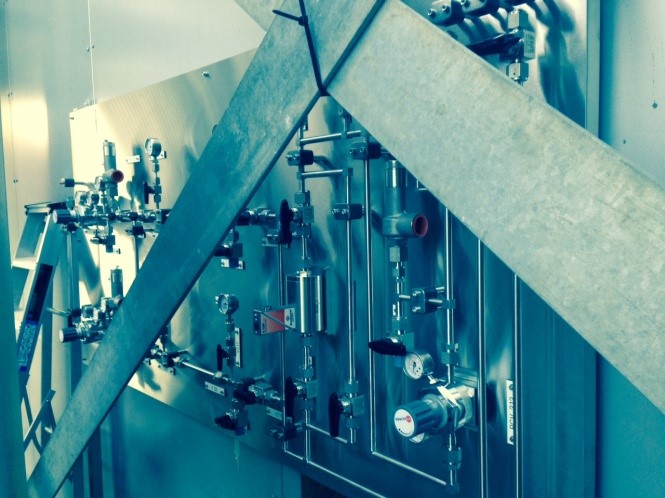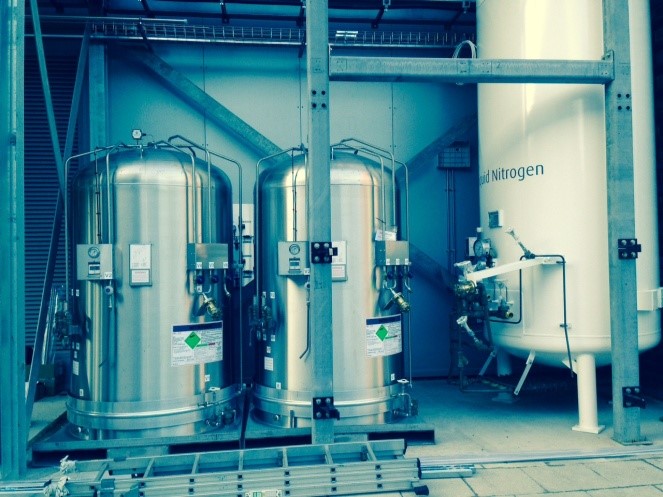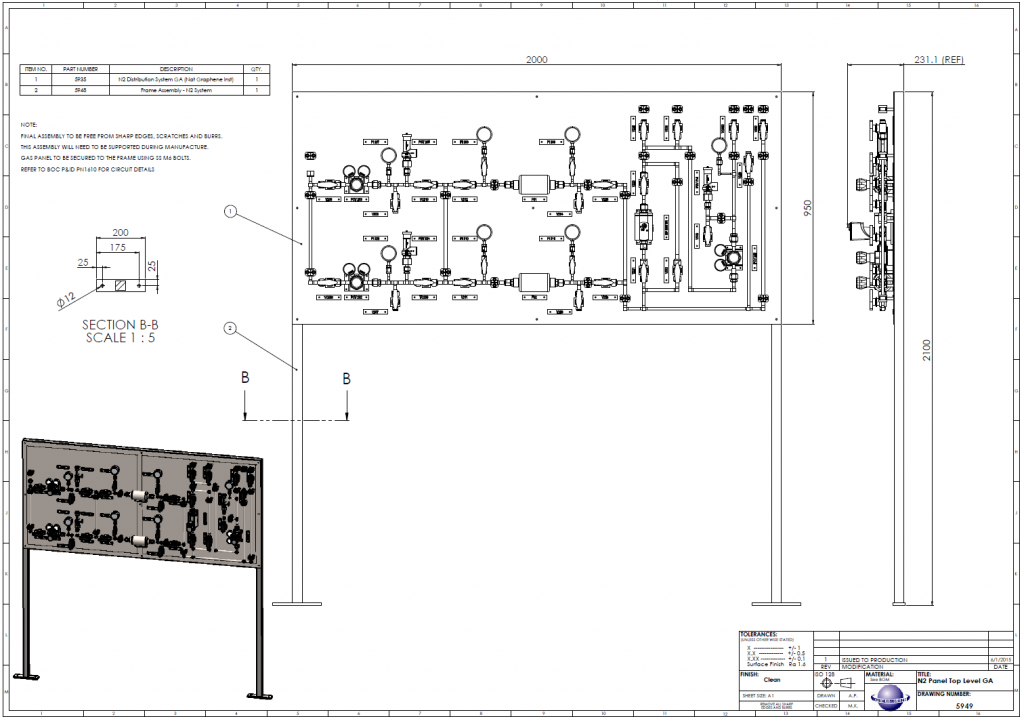The production of an innovative and efficient N2 delivery system due to the demand for high purity Nitrogen surpassing the current gas delivery system capabilities.
The Challenge
The existing system was no longer capable of supplying the gas in the quantity or purity levels required for the ongoing development activities of the scientific company. The facility was expanding with additional research into other new applications and the demand for high purity Nitrogen was surpassing the existing gas delivery systems.
Orbital Fabrications Ltd assessed the current bulk gas vessels and was tasked with controlling and supplying the gas using clean gas distribution technology to all the on-site development facilities.
The much higher gas volume tanks ‘future proofed’ the facility and the new high purity distribution system ensured the delivery of quality gas for the end application using fully welded and VCR (clean gas joint) technology. The N2 gas was expected to be delivered to point of use at a minimum purity of 99.999%.
Scientific and technological advance
Orbital Fabrications Ltd wanted to extend the overall knowledge and capability in the field of manufacturing as applied to the development and realisation of a N2 gas bulk delivery system through the adaptation of existing technology into a new application where this adaptation was not readily deducible.
Orbital specifically sought to gain the requisite knowledge and technological capability required to develop and build a new and improved N2 gas bulk delivery system capable of delivering purity levels to a minimum of 99.999% and in the required quantity. Orbital also aimed to find appropriate fabrication processes and welding techniques to produce a product viable for handling high purity nitrogen and implement this within the existing system in order:
- to develop a suitable bulk gas delivery system capable of handling and delivering high purity gas (N2) to a working pressure of 16 bar. The bulk gas vessels had to be connected to a gas distribution panel and it would deliver the required gas from the gas storage area to all the required development areas. This arrangement was required for nitrogen (N2) but could easily accommodate other inert gases when required. Orbital Fabrications Ltd developed a solution to meet the flow rates of 20.4 cubic meters per hour.
- to develop and select the appropriate components and subsystems to enable the gas distribution system to meet the required pressure and flow rates as stated in the design specification. Orbital Fabrications Ltd had to ensure that the flow within the system remained constant. Restricting or impeding the flow within the system would result in degradation in performance. Orbital Fabrications Ltd had to achieve these requirements using 1/2-inch OD with ¾ inch vent lines using stainless steel material.
- to develop a fabrication process capable of realising a gas delivery system that met the required levels of purity (99.999%). Orbital Fabrications Ltd designed a solution that maintained the high levels of purity of the respective gases as delivered from the bulk gas storage vessels to the point of usage by all the downstream processes. Contamination or reduced levels of purity of any of the gases would adversely impact on the efficiency of the downstream processes and distort the quality of any research undertaken.
- to develop and realise a safe and compliant N2 gas distribution system. Nitrogen is sometimes mistakenly considered harmless because it is nontoxic and largely inert. However, it can act as a simple asphyxiant by displacing the oxygen in air to levels below that is required to support life. In addition, nitrogen gas stored in pressurised containers and systems is stored energy that can cause serious injury or death if released in an uncontrolled manner. Nitrogen is typically stored and used in equipment at pressures ranging from 10 to 3,000 psig (0.7 to 207 bar); some pressures can be as high as 10,000 psig (690 bar). Operating pressure should not exceed the design pressure of any component in the system. Pressure is stored energy; a pressurised nitrogen jet can cause injury to skin, eyes, and ears. A nitrogen jet can also propel objects such as dust and dirt, and rupture pipes and equipment.
The Solution
Orbital Fabrications Ltd undertook an extensive design and development programme to address the technical issues. A project team was formed to analyse the customer requirement and the specification was defined and agreed with the customer. An initial scoping exercise of the technical requirements needed for the gas delivery system was undertaken. Orbital Fabrications Ltd then embarked on an iterative design process which involved the use of 2D and 3D CAD software tools. Alternative design concepts of the gas delivery system and layouts of the pipework were systematically produced and reviewed with the customer.
Orbital Fabrication Ltd used engineering calculations and volumetric modelling using numerical methods in order to finalise the design as well as assist in the component selection process. Welding trials were conducted by Orbital Fabrications Ltd as part of the process development exercise to ensure that the system was capable of handling the gas pressures and that the welding would meet the integrity levels required to satisfy the requirements of the system.
Additional process development also ensured the cleanliness levels would be maintained and it was complemented by a rigorous inspection regime to prevent the possibility of unnecessary contamination from entering the system via the welding process. Back up functionalities were developed and integrated into the distribution system to offer a purging facility in order to flush out any foreign bodies from the system.
Extensive functional, performance and pressure testing were carried out by Orbital Fabrications Ltd under simulated conditions at their facility in St. Ives. Full systems integration and process testing were conducted on site.
The N2 gas distribution system as installed at the NGI showing the distribution panel and bulk gas storage vessels.


